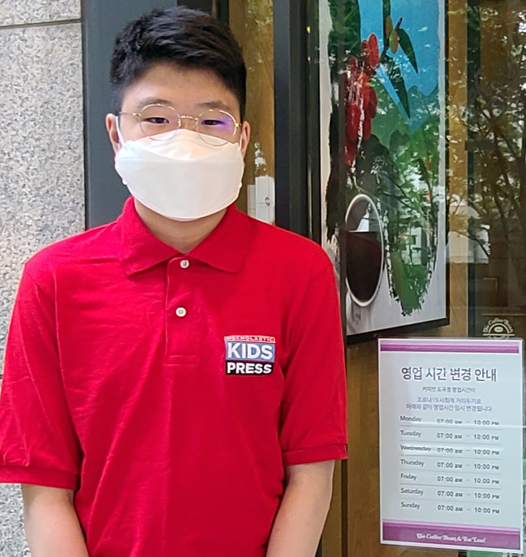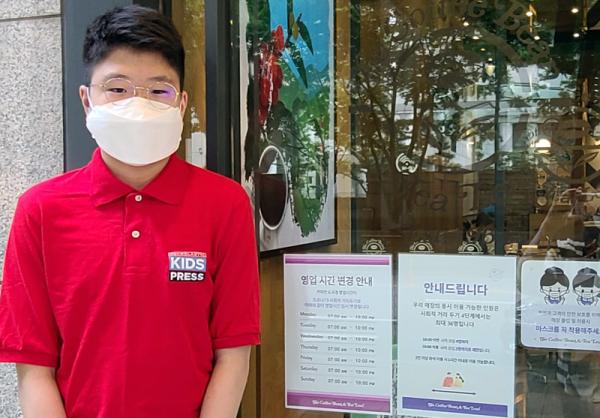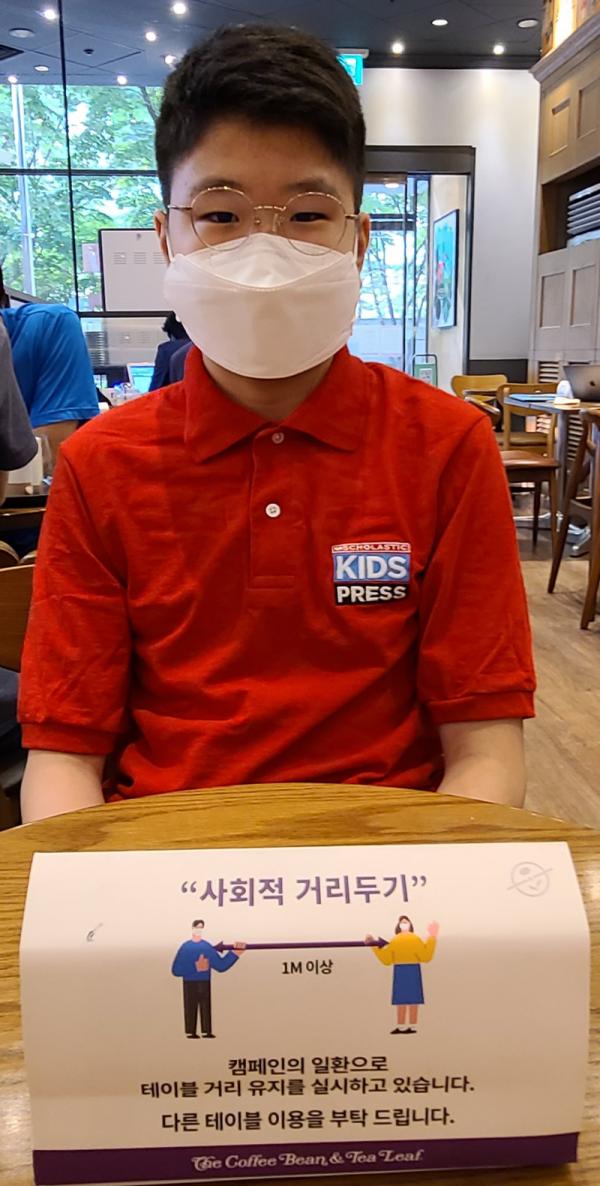KID REPORTERS’ NOTEBOOK
A New Wave of COVID-19 Hits South Korea


John has been following developments in the coronavirus pandemic from his home in Seoul, South Korea.
As countries return to some sense of normalcy in the wake of the global pandemic, South Korea is undergoing a fourth major surge of COVID-19, the infectious disease caused by the coronavirus. Many Koreans were shocked on August 13, when the number of confirmed cases surged to 2,223, breaking the previous record of 1,232. The increase initiated the largest wave yet of COVID-19 in this East Asian country of 51 million people. As of August 31, the seven-day average of recorded cases stood at 1,715.
To combat the spread of the virus, the government is reinforcing safety regulations, with businesses grouped into three major categories. The range of measures implemented in each category is based on need and rates of infection.
The government also has limited all private meetings nationwide, other than direct family members, to four individuals before 6:00 p.m. and two after 6:00 p.m. Everyone must wear a face mask in public settings or risk paying a fine that is equivalent to $90. The restrictions, which went into effect on July 12, are set to last until October 3.

Strict safety measures have been imposed in South Korea to help slow the spread of the coronavirus.
A LIMITED NUMBER OF VACCINES
By August 22, six months after the first COVID-19 vaccinations had been administered, 53.4% of Koreans had received at least the first dose of the AstraZeneca, Johnson & Johnson, Moderna, or Pfizer vaccine. Due to the limited number of vaccines available, the South Korean government began by offering vaccines to public servants and the elderly.
“I was able to reserve a time slot to be vaccinated through an app run by the Korea Disease Control and Prevention Agency [KDCA],” explained Mina Kim, an elementary school teacher in Seoul. Government registration sites have been flooded with people wanting to register for vaccines. Wait times to access the sites have reached eight hours.
LIMITING CLASS SIZES
How does this wave of infections affect the younger generation? Schools are subject to restrictions, too. In Seoul, only one-third of the student body is allowed on a school’s campus at the same time.
“At least some of us get to go to school,” said Luke Park, a sixth grader who lives in Seoul. “It’s a shame we sometimes have to go virtual.”
Other students have enjoyed virtual learning. “I like how I can wake up later,” said Samuel Devine, an international student in Gyeonggi. “It’s like summer break.”
With daily case counts remaining in the thousands, many people are becoming increasingly worried about the virus. Only time will tell if the current restrictions will help slow the spread.
